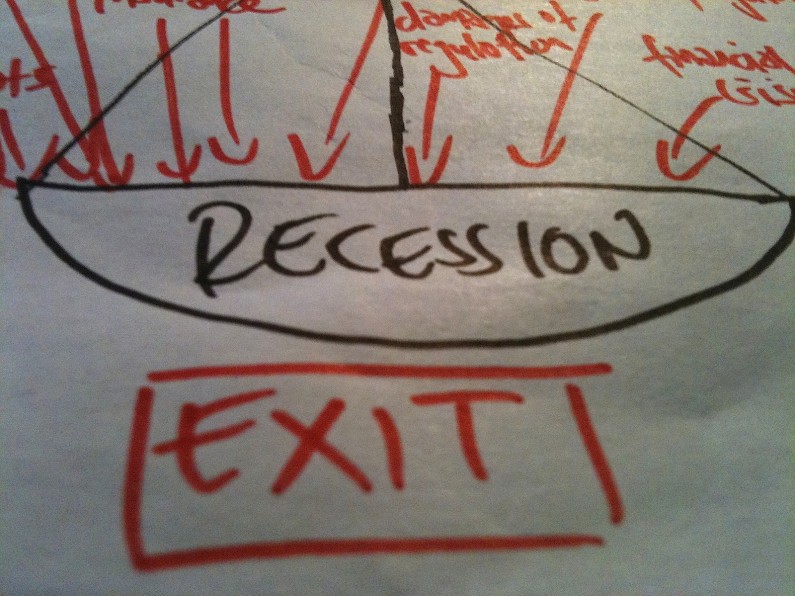
The latest economic indicators over the past two weeks are not painting a pretty picture. While they are not showing any signs of catastrophe, the state of the U.S. economy may not be in as good of shape as we thought. GDP for the fourth quarter came in at a 2.6% increase; however this number will likely be significantly lower once revised later this month. Consumer spending which accounts for two-thirds of our economy along with an increased trade deficit, import prices continuing their fall and inventories decreasing across several sectors will most likely result in a revised GDP of around 1.8% growth for the fourth quarter. The bright spot for the economy is the labor market. With job openings at levels we haven’t seen in years and jobless claims remaining relatively stable, this sector of our economy seems to be in good shape. The state of the labor market will most likely result in substantial wage increases in the coming months as employers look to fill job openings.
Domestic Economic Indicators 2/9/15 – 2/13/15
Monday 2/9 – No significant economic indicators
Tuesday 2/10
Whole Sale Inventories
- Rose 0.1%
- This came after a 0.3% decrease last week in manufacturing inventories which suggests increase to G.D.P. growth from restocking in the fourth quarter was probably not as large as initially thought
- These numbers could lead to as much as a 5 tenths of a percent decrease in GDP which would bring it around 1.7% GDP growth
- This minimal increase may suggest that economic growth in the fourth quarter was even slower than initially thought
JOLTS (Job Openings and Labor Turnover Survey)
- Job openings for the month of December were 5.08 million which are the highest levels since January 2001
- Total hires were at 5.15 million while job separation was at 4.89 million
- The quits rate came in at 1.9%
- The number of job openings is seen as a measure of the labor markets slack
- More job opening indicating the balance of power in the labor market shifting towards workers looking for jobs and away from employers looking to higher
- This shift will likely result in wage increases down the road
Wednesday 2/11
EIA Petroleum Status Report
- Oil inventories rose for a third straight week by 4.9 million barrels
- 3rd straight 80 year high of 417.9 million barrels
- Imports of oil was also down for the week
- Refineries slowed production of gasoline but inventories rose 2 million barrels
- WTI was down 50 cents to $48.35 in reaction to this report
Treasury Budget
- Federal Government had a $18 billion deficit for the month which was hirer than analyst estimations of $10 billion
- Deficit is on an upward path from October to January
- The increase is most likely due to higher spending on government health care services for low income Americans
- $5 billion more was spent on Medicare compared to a year ago
Thursday 2/12
Initial Jobless Claims
- Rose 25,000 unexpectedly to 304,000
- The trend remains consistent with a strengthening labor market
- The four week moving average which is considered a better measure of the labor market fell 3,250 to 289,750 last week
- The economy added more than a million jobs over the past three months, which is something not seen since 1997
Retail Sales
- 0.8% decrease in January which was the second straight month of declining retail sales
- Following a 0.3 percent drop in December and was below Wall Street’s expectations for a 0.4 percent increase
- This is another factor that weighs on GDP and with the decline the revised GDP will most likely be lower than initially reported
- Households cut back on purchases of a range of goods, suggesting the economy started the first quarter on a softer note
- Speculated that consumers were using the extra income from cheap gasoline and a strengthening labor market to pay down debt and boost savings rather than spend
Business Inventories
- Up 0.1% which is the slowest pace since August
- The decline in inventory growth in recent months could be a reaction to the weakness in sales, with businesses cutting back on restocking amid falling demand
Friday 2/13
Import & Export Prices
- Import prices fell 2.8% last month which was the largest decline since December 2008
- Was the 7th straight month of declines for import prices
- Was the result of the falling prices of petroleum and a range of other goods, pointing to muted inflation pressures in the near term
- sets the stage for declines in both the producer and consumer inflation in January
- the dollar has strengthened significantly against the currencies of the country’s main trading partners, helping to pull inflation further away from the Federal Reserve’s 2 percent target
Consumer Sentiment
- Fell from 98.1 in January to 93.6 which was an unexpected drop as economists expected it to hold steady
- Main cause of the drop was households were less optimistic about current economic conditions as well as the outlook over the next six months. The survey also showed a fairly big fall in household intentions to purchase long-lasting manufactured goods, while plans to buy automobiles were little changed
- This was a fall from an 11 year high which was a result of worries over an economic slowdown
- May also suggest the weakness in spending may last awhile
